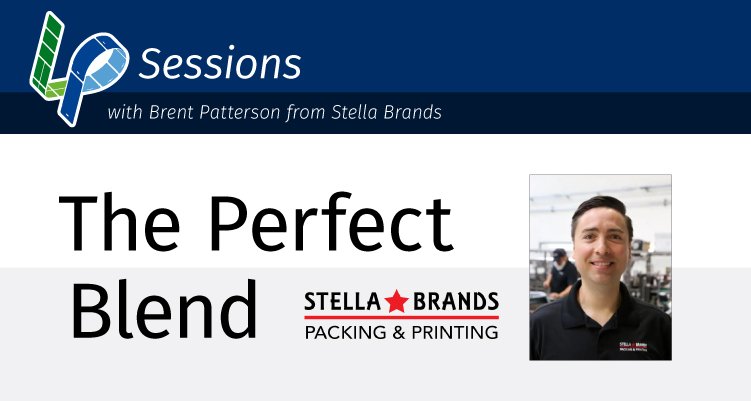Stella Brand & S-OneLP Develop Bio-Based Coffee Pod Lid
Every day across America, an estimated 40 percent of American households wake up, pop their favorite coffee pod into their single-cup machines, and press BREW. In a matter of minutes, they’re able to enjoy their first cup of the day.
Single-cup coffee and espresso brew systems are incredibly popular for their simplicity and convenience. These machines are everywhere: hotel rooms, offices, break rooms, waiting rooms, you name it. Many coffee drinkers consume multiple cups a day and often retire in the evening with a warm cup of tea or hot chocolate. These disposable pint-sized pods are big business.
As ubiquitous as these coffee machines have become in daily American life, many consumers are waking up to the sheer volume of trash their daily coffee routine produces.
That’s a lot of pods. And A LOT of plastic. It’s been said that the amount of single-use coffee pods in landfills today could wrap around the planet 10 times.
Coffee consumers are now pushing their favorite coffee brands to act, and those in the coffee industry are asking: is there a waste stream alternative for single-use coffee pods? How can our customers still enjoy single-cup coffee pods without putting more plastic in landfills?
Background
Stella Brands is a Las Vegas-based contract packager for the coffee pods market. Owner Brent Patterson and his team fill the coffee pods with grounds and print and die cut the pod lids with digital and flexographic technology.
Patterson had been mulling over the same questions when he connected with S-One Labels & Packaging for help.
Coffee pods are often made from recyclable plastic, but many consumers may not realize that throwing them in their blue bin curbside recycling would contaminate the waste stream. To fully recycle the pod, a consumer would have to remove the lid, remove the grounds and filter material inside, rinse the coffee pod, then recycle the cup.
“In reality, that’s not happening,” Patterson explains. “The consumer, after they’re done brewing it, throws it in the recycling bin and thinks that it’s recyclable, but truly it’s not.”
He continues: “So that leads us to the next step: What if we can get these pods out of the waste stream altogether?”
Compostable pod alternatives already existed, but there was still a problem: the lid prevented the pods from being fully compostable.
The Challenge
The lid is more than a 2 ½ inch diameter co-star to the coffee pod’s starring role. The lid is an integral part of ensuring that pods perform in the brew cycle. That tiny piece of foil is a key to controlling heat, steam, pressure, and water and making sure your cup tastes the way you expect.
Heat, steam, pressure, and water are similar conditions needed to commercially compost bioplastics.
So, the challenge Patterson brought to the S-OneLP team was finding something that eventually would break down in compost conditions and be strong enough to withstand the harsh environment of the brew cycle, all while also performing within the specifications of the manufacturing equipment.
The team was looking for the perfect blend.
“We had to walk the tightrope between what works in the brewing cycle and what breaks down as fast as possible,” Patterson explained.
In a background of a global health pandemic, the group worked mainly over Zoom calls. Dan Halkyard, senior director of new product development with S-OneLP, arranged vendor partners and testing, Patterson ran trials of the equipment and brew cycle, and valuable partners for compostable films, adhesives, and the lamination process were consulted.
The Solution
After two years of trial and error, failures, and triumphs, the R&D group finally developed a product from S-OneLP’s ReEarth compostable and bio-based portfolio that ticked all those boxes. The material is a printable paper-based prelaminated structure with a sealant web.
All material components have met ASTM D6400 standards for commercial compostability and have been submitted for TUV OK Compost industrial third-party certification. Testing and results are pending.
“Everybody involved in this process had the same goal in mind, and it’s easy to work with a group of people who want to be successful, have tons of industry experience, and don’t have to deal with egos,” Patterson says. “Good things happen when everybody brings their experience to the table and tries to accomplish a goal together.”
He continues: “In essence, we’re raising the bar. What was previously accepted as the best option for the environment is not ideal and we know we can do better. We want to keep raising the bar and make sure we’re all speaking the same language for what the benefits are for this type of packaging
“My favorite part about working with the team at S-OneLP is their depth of experience and their reach in the industry,” Patterson says. “Working with S-OneLP, we are all on the same page trying to figure out what will be the best for the customer. Not only what’s best for right now but what’s going to work best for the future. We’re already thinking ahead of what’s next.”


Leave a Reply
Your email address will not be published. Required fields are marked *